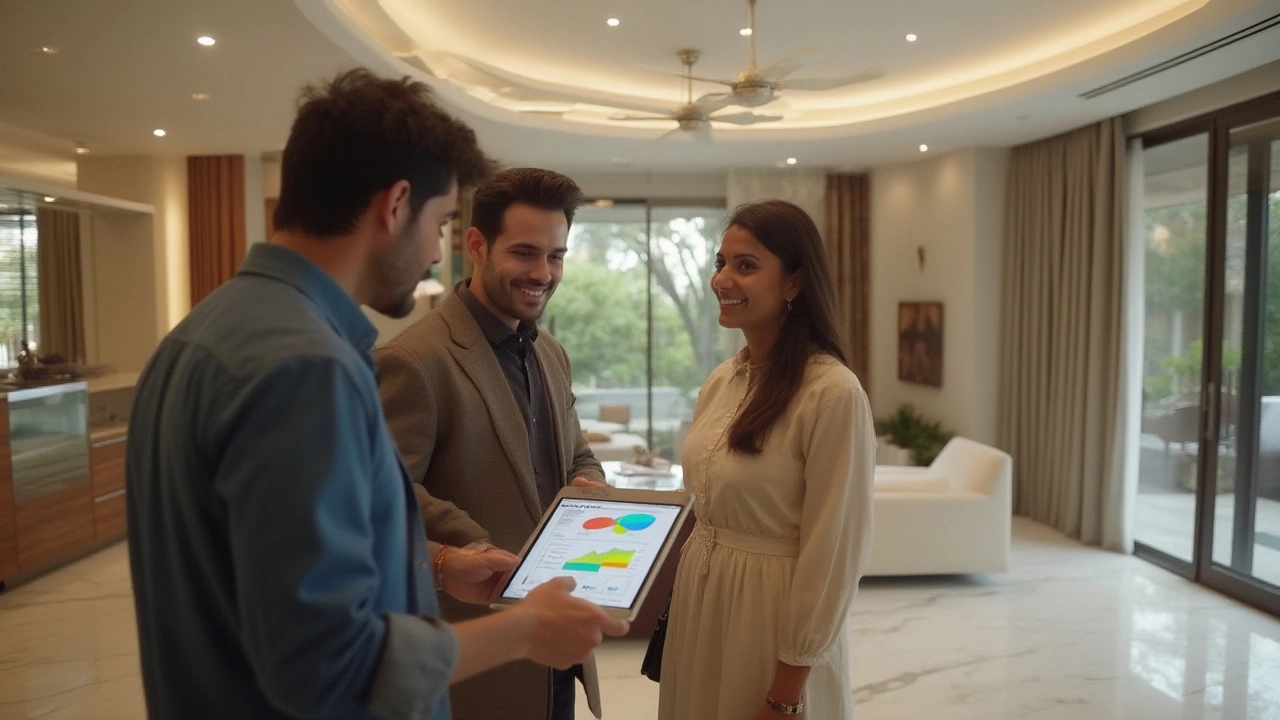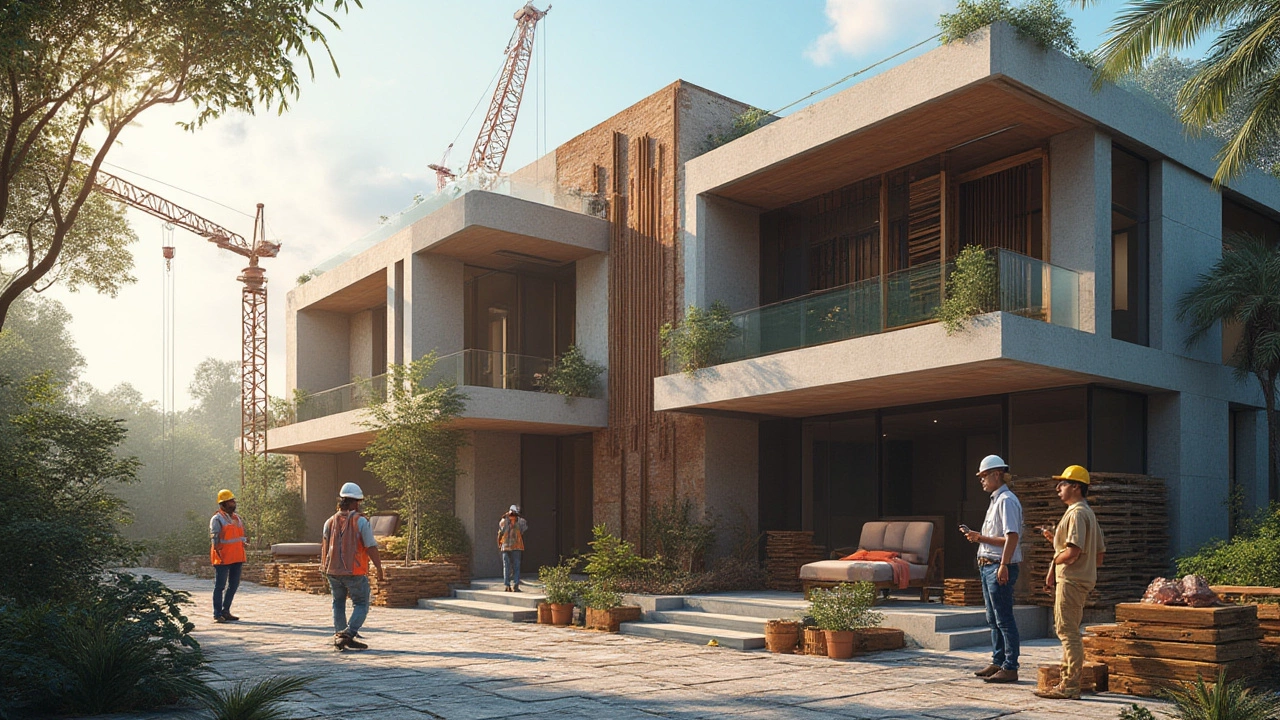Ever heard stories of wild villa price tags and wondered if they’re remotely real? Spoiler: some are close, but most hide a twist or two. The dream of a modern villa looks amazing on your Pinterest board, but the numbers behind it can surprise even those who think they’ve done their homework. It’s not just about picking sleek glass walls or a sunken living room; it’s how everything clicks together, from the soil under your toes to the fixtures on your walls. Let’s rip the cover off villa costs in 2025 and see what’s actually hiding inside that ‘wow’ price tag.
What Shapes the Cost of Building a Modern Villa?
When people ask, “How much does it cost to build a modern villa?”, they probably wish it had a straight answer. The truth is, there are at least ten moving pieces, all with minds of their own. Land location? That’s your biggest wild card. A patch of earth 40 minutes outside the city doesn’t even try to compete with one that’s a hop from trendy cafes or comes with ocean views. The price difference can be double, sometimes triple, before you’ve laid a single brick. Sure, you can nab a deal on the outskirts, but then infrastructure costs—water, electricity, roads—can nudge the actual number back up again.
Now zoom in on architecture. That award-winning design you saw on Instagram? Custom work by a top architect is billed by the square foot and by the ego. Want a curved glass staircase or eco-smart walls that change tint? Expect to pay for the wow factor in both design and engineering. Don’t forget the structure you need underneath, either. Soft or hilly land needs more foundation work, and challenging soil problems (like flooding or clay) can quickly inflate construction budgets by 20%–30% and cause restless nights for your builder.
Here’s a little-known fact: as of July 2025, rising raw material costs are giving everyone headaches. Steel, up roughly 13% year-on-year. High-grade concrete now carries surcharges, and energy-efficient glass panels are becoming more popular—but that demand bumps up the price. Labor adds more wobbles. With skilled workers chasing high demand, salaries have shot up, especially for carpenters, electricians, and specialists used to working on luxury homes. Count on labor gobbling 30%–40% of your construction budget, or more if your villa plans get extra fancy.
And we haven’t even hit regulations. Most urban areas now have eco-standards for new builds. Solar panels, energy-grade windows, particle filters in air systems—they’re either required or smart to have, and they can add thousands to each phase. Permits and inspections, architect fees, landscape design: welcome to the endless add-ons. Here’s a tip: check if the land has any unusual zoning, environmental, or heritage restrictions before daydreaming too far. Stumbling into red tape late in the game can crush your timeline and your wallet.
Breaking Down the Costs: From Land to Luxury Touches
Numbers matter, so let’s get specific. In most urban markets in 2025—think places like Bengaluru, Dubai outskirts, or suburban California—you’ll find land for a villa project is anywhere from $150 to $500 per square foot, but a sweet spot for premium locations hovers near that upper range, especially if you insist on privacy or a killer view. For a modern villa on a 5,000 sq ft plot, you’re already considering $750,000 to $2.5 million just for land. If you want more space or clever landscaping, nudge that number up without blinking.
Construction costs themselves have a wide range. Sticking to quality (but not absolutely over-the-top) materials, the modern villa construction cost sits between $200 and $600 per square foot, depending how wild you get with the details. Let’s do the math: a 4,000 sq ft villa built with decent-to-luxury finishes rings in at $800,000 to $2.4 million just in bricks, glass, and skilled hands. Add another 10-20% for custom features—skylit bathrooms, marble flooring, open-air atriums, and IoT-based home automation systems.
If you’re planning pools, sun decks, gyms, or even a home theater, those additions each tack $70,000 to $200,000 more onto your total, easily. Luxury tech—like centralized lighting via smartphone, security surveillance, or built-in sound—add up fast. For larger villas, a rule of thumb: tech and entertainment extras can push 7–10% of your total project budget (sometimes double if you go all-in on smart home features or heated infinity pools).
The soft costs are the ones that sneak up. Expect lawyer’s fees for contracts, insurance payouts, and at least three kinds of government permits along the way. Architects and interior designers can claim 5–15% of your construction budget, so watch for that if your plans aren’t ready-made. Landscaping often ends as an afterthought, but turning a bare patch into a Zen garden or layered green haven tacks on $50,000 to $200,000 or more, especially if you hire a top designer or insist on imported plants.
Now there’s a dark horse: delays. Weather (especially in monsoon or snow-prone regions), labor shortages, or supply chain chaos can spike your costs 10–15% before you even notice what’s happening. Many smart villa builders now budget a ‘contingency’—5% to 10% of the total price—just to keep nightmares from becoming reality when the rains hit or a shipment is late.

How to Save Money (Without Cutting Corners)
It’s tempting to believe that a sharp negotiation or a good contractor is all you need to save big on a villa project. Truthfully, there are smarter ways to make every dollar count without waking in a sweat over shoddy work. Begin with your plans: keep them simple and functional. Straight lines, open plans, and modular features are not just a trend—they genuinely save you money at every stage. Fancy curves and custom engineering details bleed cash faster than most people realize. Want a nice façade? Choose local stone or brick instead of shipping materials across countries.
Materials often get hyped, but if you can source them locally or buy direct in bulk, discounts add up fast. Ask your builder if you can piggyback on their other projects’ orders; sometimes simply aligning your timelines saves thousands. And don’t ignore the power of off-season bargaining; many suppliers offer deals during the slower building months when work slows down.
Another cost saver? Energy efficiency from the start. Rooftop solar, smart thermostats, passive cooling, and efficient insulation have a higher up-front cost, but building this in helps slash monthly bills for years. In some markets, governments offer tax rebates or green building grants for meeting these standards, putting dollars back in your pocket at project’s end. Installing all this during the building phase is much cheaper than retrofitting later.
Always check contractor backgrounds. A good team with a solid reputation can spot costly problems before they explode, saving you from budget overruns. Scrutinize contracts to make sure you’re not paying for unnecessary layers of management or inflated overheads. If a builder pushes too hard for higher payments up front, treat it as a red flag. Payments should follow clear completion milestones to keep everyone honest.
Use technology to your advantage. Modern villa builds benefit big from project management software—nothing fancy; even shared spreadsheets showing progress and costs keep things transparent. A little research now can prevent a lot of stress later, especially if you’re building away from your permanent home or managing things remotely. Don’t shy away from professional project managers for complex jobs; their fees are often less than the money they help you save on mistakes and delays.
Modern Villa Dreams: What’s Worth the Splurge?
If you’ve made it this far, you’re probably wondering: what makes a villa feel truly modern and timeless, and where’s the line between a smart investment and a show-off splurge? Here’s where the personal part kicks in. In 2025, demand for outdoor-indoor living is at an all-time high. It’s not just about a pool or BBQ yard; it’s seamless glass doors, pergolas, shaded lounges, and even compact vertical gardens that let you escape (without leaving your Wi-Fi behind). These upgrades, while pricey, add real value—not just when you live there, but if you ever decide to sell.
Home automation features are racing up wish lists. Voice-controlled blinds, mood lighting, solar-integrated energy systems, and AI-powered security aren’t just bells and whistles now—they’re standard in luxury modern villas. While some tech goes out of style as fast as phones, integrated smart infrastructure keeps your home future-proof. It can cost $50,000 or more for a full smart package, but this is where new owners expect modern living to start.
Bespoke kitchens and bathrooms can turn a villa from “nice” to “I need it.” High-end appliances, butler pantries, and spa-grade showers are the details that guests remember and homeowners treasure every day. While it’s easy to drop serious cash here, choose timeless layouts and finishes—hardwoods, stone, or top-line porcelain—that last for decades without screaming last year’s fashion.
What about sustainability? In real terms, solar panels, rainwater harvesting, green roofs, and grey water recycling aren’t just for earning eco-bonus points. They lower running costs, meet regulatory demands, and—if you’re thinking of the bigger picture—make your villa stand out in hot property markets focused on green living. Eco upgrades can stretch your budget by 5–12%, but the long-term savings and resale bump usually make them worthwhile.
Here’s a final tip: don’t lose sleep over every detail, but invest where it matters to you. A home theater only makes sense if you use it. Expensive imported marble loses its charm if maintenance is a headache. Spend your time and money on features that fit your lifestyle and you’ll love every square foot—even if those Instagram-perfect extras stay as Pinterest dreams.
